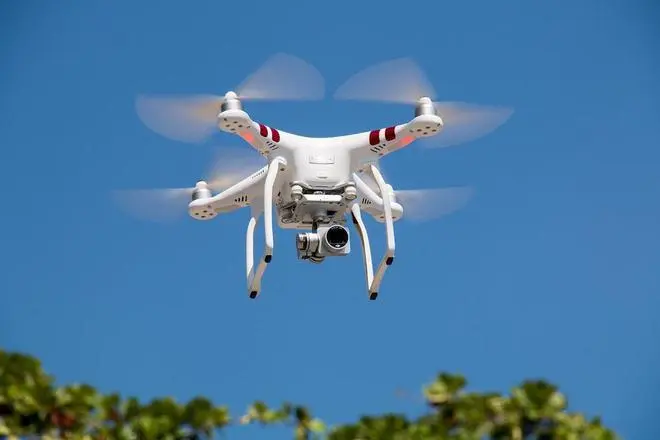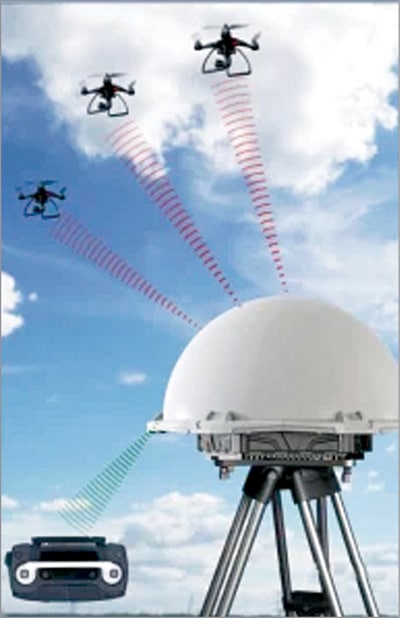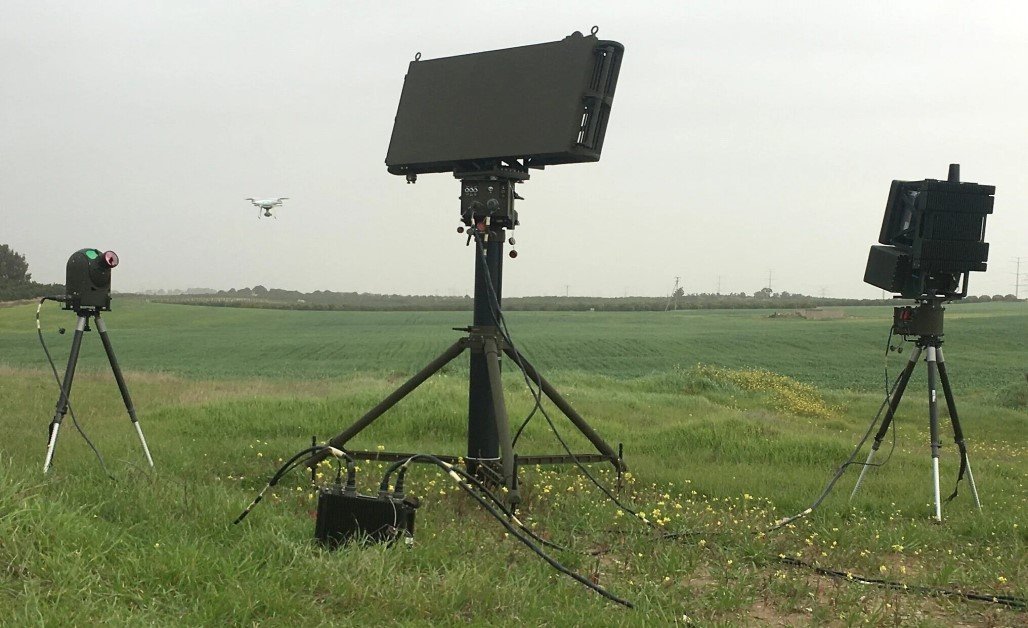Using Deep Learning to Optimize Signal Disruption in Anti Drone Jammer
Unapproved monitoring, smuggling, and even terrorist strikes are just a few of the new dangers brought about by the rapid development of both commercial and personal drones. Anti-drone jammer technologies, which are systems made to identify, track, and interfere with drone operators’ communication, have advanced as a result of this growing worry. The limitations of traditional signal jamming techniques increase with the intensity of threats. Deep learning provides a revolutionary method to maximize signal changes and boost drone jammer efficacy in this situation.
In this article, we examine how deep learning can be used to improve anti-drone jammer systems’ functionality. We’ll look at the fundamental issues, emerging technology, and how artificial intelligence is changing the counter-drone market.
Understanding Anti Drone Jammers
Before delving into deep learning, it’s essential to understand how drone jammers function.
In order to prevent a drone from communicating with its controller or with GPS satellites, an anti-drone jammer sends out electromagnetic signals. Usually, this interference requires the drone to either land right away or head back to its starting location. The following are the most dominant sources of jamming signals:
- RF Jamming: Disrupts command-and-control (C2) frequencies such as 2.4 GHz and 5.8 GHz.
- GPS Jamming: Blocks navigation signals by targeting GPS frequencies (1.575 GHz and 1.227 GHz).
- Wi-Fi Jamming: Targets drones that rely on Wi-Fi-based FPV (first-person view) communication.
However, modern drones often employ frequency-hopping spread spectrum (FHSS), encrypted channels, and adaptive communication protocols, making them increasingly resilient to conventional drone jammer techniques.

The Challenges in Traditional Jamming Approaches
The effectiveness of traditional drone jammers is limited by several factors:
- Signal Precision: Generic jamming techniques can interfere with other devices, causing collateral damage in urban or sensitive environments.
- Latency in Response: Delayed detection and jamming may allow the drone to complete part of its mission before being neutralized.
- Adaptive Drones: New-generation drones can switch frequencies or modes to bypass jamming signals.
- Energy Efficiency: Broad-spectrum jamming requires high power consumption and may not be sustainable for continuous operation.
These challenges demand a smarter, more targeted solution — and that’s precisely what deep learning can provide.
What is Deep Learning?
Deep learning is a subset of machine learning based on artificial neural networks. It excels at recognizing patterns in complex datasets, making it ideal for analyzing real-time RF signals, classifying drone types, predicting behavior, and generating flexible techniques.
When applied to Anti Drone Jammer systems, deep learning can revolutionize signal disruption strategies by:
- Identifying the drone model and communication protocol.
- Predicting the most effective frequency to jam.
- Dynamically adjusting jamming parameters based on environmental conditions and signal patterns.
- Learning and improving over time through continuous data collection.
Deep Learning for Signal Classification
At the core of intelligent jamming lies the ability to classify drone signals accurately. Deep learning models such as Convolutional Neural Networks (CNNs) and Recurrent Neural Networks (RNNs) can be trained on massive datasets of RF signatures to differentiate between drone signals and non-drone signals.
Example Workflow:
- Signal Capture: RF sensors or Software Defined Radios (SDRs) capture a wide range of frequencies.
- Preprocessing: Signals are filtered, converted into spectrograms, and normalized.
- Classification: A CNN processes the spectrogram to classify the type of drone and its communication protocol.
- Decision Making: Based on the classification, a targeted jamming signal is generated, minimizing disruption to surrounding communication systems.
This technique allows drone jammers to engage only the relevant signals, improving both efficiency and legal compliance.
Adaptive Signal Disruption with Deep Reinforcement Learning
While classification is crucial, the real power of deep learning in Anti Drone Jammer systems comes from reinforcement learning (RL). Deep Reinforcement Learning (DRL) enables the system to learn optimal jamming strategies through trial and error.
How DRL Enhances Jamming:
- Environment Awareness: The system receives real-time feedback from the environment, such as signal strength, drone reaction, and battery consumption.
- Policy Learning: It learns a policy (a mapping from states to actions) that maximizes a reward — e.g., successful disruption with minimal energy usage.
- Dynamic Frequency Selection: DRL agents can dynamically select which frequencies to target based on historical success and current interference.
Over time, this self-learning model becomes highly proficient at neutralizing different types of drones with varying behaviors.
Generative Models for Signal Prediction
In more complex usage situations, drone response to a jamming signal can be performed with Generative Adversarial Networks (GANs) or Variational Autoencoders (VAEs). The Anti Drone Jammer can stay ahead of the game by anticipating and altering its jamming technique because to its predictive capability.
Benefits:
- Simulates drone behavior under various jamming scenarios.
- Identifies potential weaknesses in drone communication patterns.
- Prepares jamming signals that counter anticipated adaptations.
By generating synthetic signal data, these models help improve the robustness of the drone jammer even in unseen scenarios.
Real-World Applications and Case Studies
1. Military Bases
To protect airspace from intelligence drones, military sites employ deep learning-enhanced anti-drone jammer systems. The system can identify friendly and dangerous UAVs accurately and jam them by examining drone flight patterns and communication protocols.
2. Airports
Airport deep learning-based drone jammers utilize restricted, AI-guided directional jamming to prevent extensive interference. Without interfering with commercial aircraft’s ability to communicate with control towers, these devices guarantee the safety of flight operations.
3. Critical Infrastructure
AI-driven drone jammer systems are used by financial institutions, government facilities, and energy plants to develop secure borders. To increase efficiency and reduce false alarms, these systems are continuously trained using real-time data.

System Architecture of a Deep Learning-Powered Anti Drone Jammer
A modern deep learning-enabled Anti Drone Jammer system consists of the following components:
- RF Signal Capture Unit: SDRs or dedicated antennas to collect RF signals.
- Preprocessing Engine: Noise reduction, spectrogram generation, and signal transformation.
- Deep Learning Classifier: CNN or RNN models for real-time signal classification.
- Reinforcement Learning Agent: Selects optimal jamming strategies based on environment feedback.
- Jammer Control Module: Adjusts power, frequency, and directionality of emitted signals.
- Data Logger and Feedback Loop: Stores all signals and outcomes for continuous model training.
This modular architecture ensures scalability, adaptability, and ongoing performance enhancement.
Advantages of Using Deep Learning in Drone Jammers
| Feature | Traditional Jammers | Deep Learning-Enhanced Jammers |
|---|---|---|
| Signal Specificity | Low | High |
| Adaptability | Static | Dynamic |
| Interference Control | Broad-spectrum | Targeted |
| Learning Capability | None | Continuous |
| Efficiency | Power-intensive | Optimized |
Future Trends and Research Directions
The future of Anti Drone Jammer systems lies in increased autonomy, better integration with sensor fusion systems, and enhanced learning capabilities. Emerging research areas include:
- Swarm Drone Disruption: Developing AI models that can disrupt coordinated drone swarms.
- Multi-Modal Fusion: Integrating video, radar, and acoustic data with RF signals to improve classification.
- Edge AI Deployment: Running deep learning models on edge devices to enable real-time jamming decisions without relying on centralized servers.
- Ethical and Legal AI: Ensuring AI-powered drone jammers comply with airspace regulations and don’t infringe on civil liberties.
Challenges in Deploying AI-Powered Drone Jammers
While promising, there are challenges:
- Data Scarcity: High-quality labeled datasets for training deep learning models are hard to obtain.
- Adversarial Attacks: Malicious drones could be equipped to deceive AI classifiers.
- Regulatory Hurdles: AI-enabled jamming must comply with local and international laws governing RF interference.
Continuous collaboration between technology providers, regulatory bodies, and defense organizations is necessary to overcome these obstacles.
Conclusion
Deep learning’s incorporation into anti-drone jammer systems represents a major advancement in counter-UAV technology. Deep learning improves drone jammers’ accuracy and efficiency by converting static, assault jamming into intelligent, flexible signal disruption.
Our defenses must change along with drone threats. Drone jammers can keep ahead of advanced UAVs by utilizing AI-driven insights, offering safer airspace and more secure surroundings for anyone.

